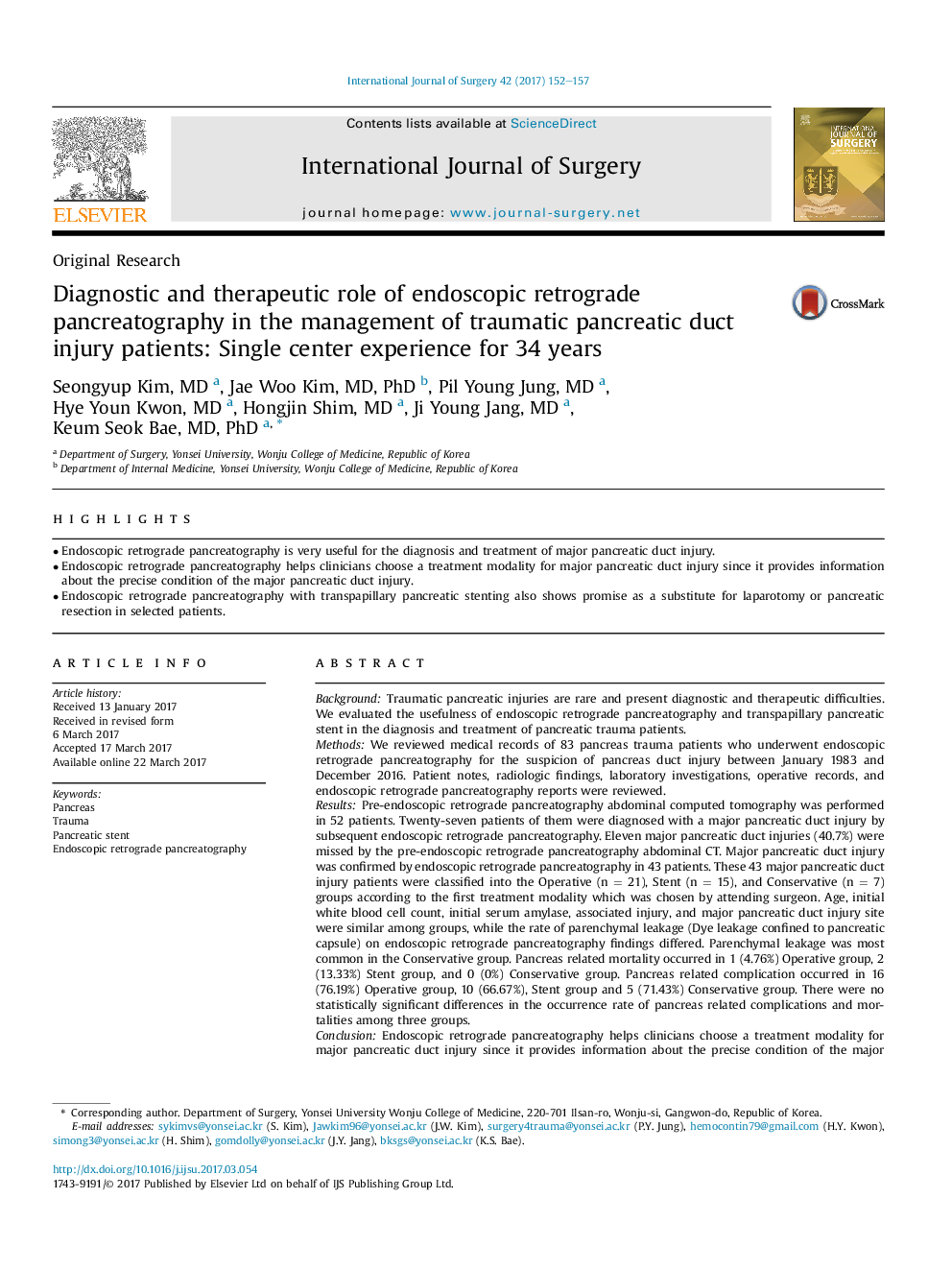| کد مقاله | کد نشریه | سال انتشار | مقاله انگلیسی | نسخه تمام متن |
|---|---|---|---|---|
| 5731745 | 1611936 | 2017 | 6 صفحه PDF | دانلود رایگان |

- Endoscopic retrograde pancreatography is very useful for the diagnosis and treatment of major pancreatic duct injury.
- Endoscopic retrograde pancreatography helps clinicians choose a treatment modality for major pancreatic duct injury since it provides information about the precise condition of the major pancreatic duct injury.
- Endoscopic retrograde pancreatography with transpapillary pancreatic stenting also shows promise as a substitute for laparotomy or pancreatic resection in selected patients.
BackgroundTraumatic pancreatic injuries are rare and present diagnostic and therapeutic difficulties. We evaluated the usefulness of endoscopic retrograde pancreatography and transpapillary pancreatic stent in the diagnosis and treatment of pancreatic trauma patients.MethodsWe reviewed medical records of 83 pancreas trauma patients who underwent endoscopic retrograde pancreatography for the suspicion of pancreas duct injury between January 1983 and December 2016. Patient notes, radiologic findings, laboratory investigations, operative records, and endoscopic retrograde pancreatography reports were reviewed.ResultsPre-endoscopic retrograde pancreatography abdominal computed tomography was performed in 52 patients. Twenty-seven patients of them were diagnosed with a major pancreatic duct injury by subsequent endoscopic retrograde pancreatography. Eleven major pancreatic duct injuries (40.7%) were missed by the pre-endoscopic retrograde pancreatography abdominal CT. Major pancreatic duct injury was confirmed by endoscopic retrograde pancreatography in 43 patients. These 43 major pancreatic duct injury patients were classified into the Operative (n = 21), Stent (n = 15), and Conservative (n = 7) groups according to the first treatment modality which was chosen by attending surgeon. Age, initial white blood cell count, initial serum amylase, associated injury, and major pancreatic duct injury site were similar among groups, while the rate of parenchymal leakage (Dye leakage confined to pancreatic capsule) on endoscopic retrograde pancreatography findings differed. Parenchymal leakage was most common in the Conservative group. Pancreas related mortality occurred in 1 (4.76%) Operative group, 2 (13.33%) Stent group, and 0 (0%) Conservative group. Pancreas related complication occurred in 16 (76.19%) Operative group, 10 (66.67%), Stent group and 5 (71.43%) Conservative group. There were no statistically significant differences in the occurrence rate of pancreas related complications and mortalities among three groups.ConclusionEndoscopic retrograde pancreatography helps clinicians choose a treatment modality for major pancreatic duct injury since it provides information about the precise condition of the major pancreatic duct injury. Endoscopic retrograde pancreatography with transpapillary pancreatic stenting also shows promise as a substitute for laparotomy or pancreatic resection in selected patients.
Journal: International Journal of Surgery - Volume 42, June 2017, Pages 152-157